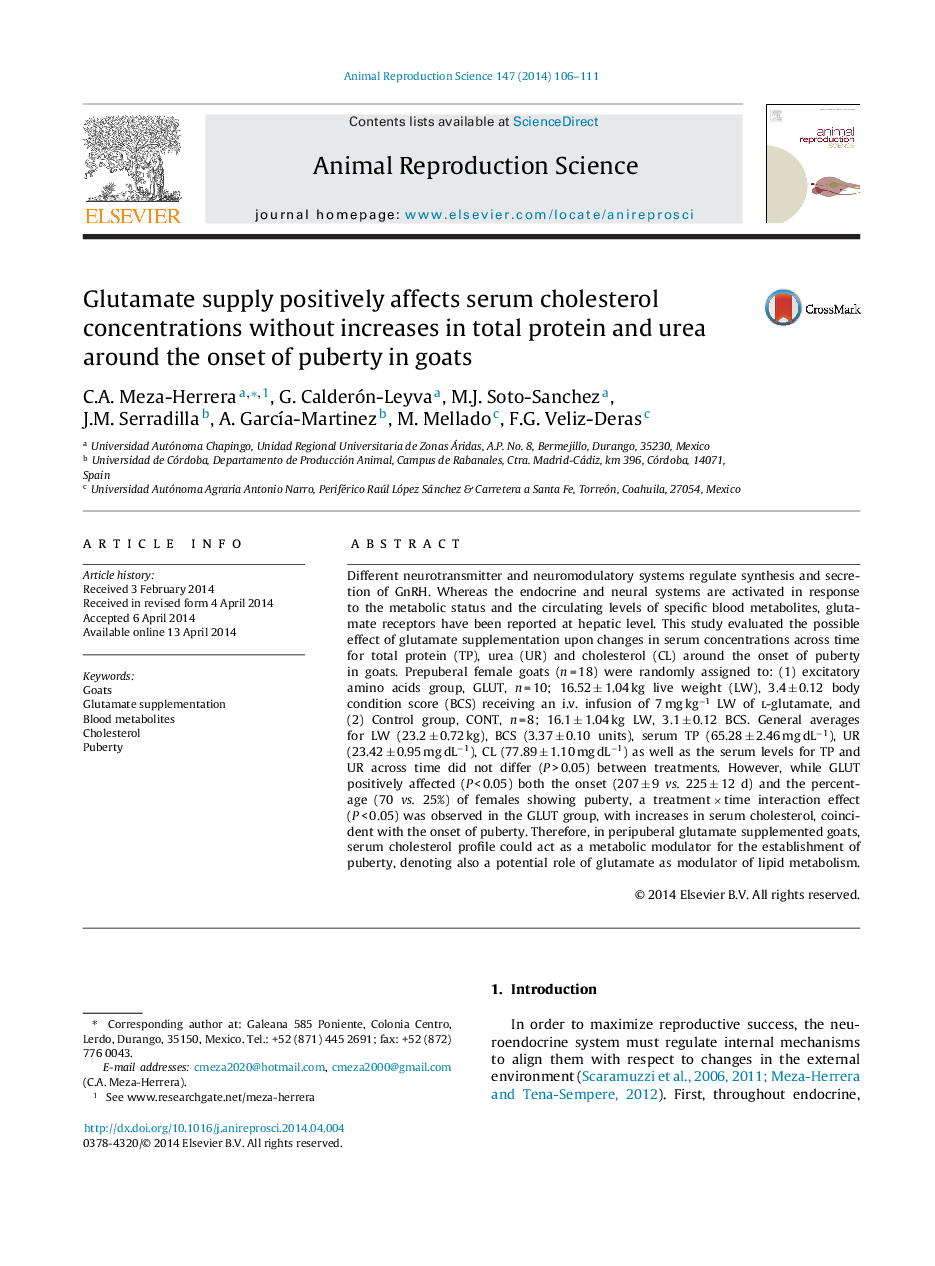| Article ID | Journal | Published Year | Pages | File Type |
|---|---|---|---|---|
| 2072809 | Animal Reproduction Science | 2014 | 6 Pages |
Different neurotransmitter and neuromodulatory systems regulate synthesis and secretion of GnRH. Whereas the endocrine and neural systems are activated in response to the metabolic status and the circulating levels of specific blood metabolites, glutamate receptors have been reported at hepatic level. This study evaluated the possible effect of glutamate supplementation upon changes in serum concentrations across time for total protein (TP), urea (UR) and cholesterol (CL) around the onset of puberty in goats. Prepuberal female goats (n = 18) were randomly assigned to: (1) excitatory amino acids group, GLUT, n = 10; 16.52 ± 1.04 kg live weight (LW), 3.4 ± 0.12 body condition score (BCS) receiving an i.v. infusion of 7 mg kg−1 LW of l-glutamate, and (2) Control group, CONT, n = 8; 16.1 ± 1.04 kg LW, 3.1 ± 0.12 BCS. General averages for LW (23.2 ± 0.72 kg), BCS (3.37 ± 0.10 units), serum TP (65.28 ± 2.46 mg dL−1), UR (23.42 ± 0.95 mg dL−1), CL (77.89 ± 1.10 mg dL−1) as well as the serum levels for TP and UR across time did not differ (P > 0.05) between treatments. However, while GLUT positively affected (P < 0.05) both the onset (207 ± 9 vs. 225 ± 12 d) and the percentage (70 vs. 25%) of females showing puberty, a treatment × time interaction effect (P < 0.05) was observed in the GLUT group, with increases in serum cholesterol, coincident with the onset of puberty. Therefore, in peripuberal glutamate supplemented goats, serum cholesterol profile could act as a metabolic modulator for the establishment of puberty, denoting also a potential role of glutamate as modulator of lipid metabolism.
